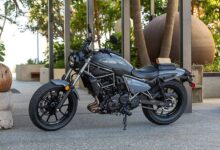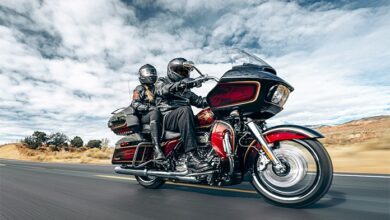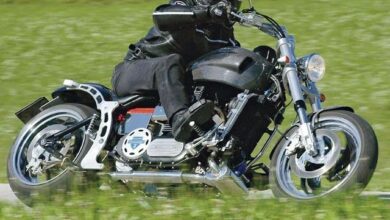HOW TO READ MOTORCYCLE OIL PECIFICATIONS LIKE A PRO 2023
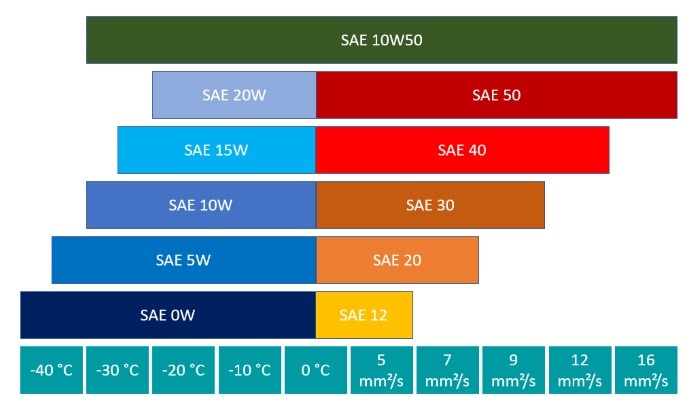
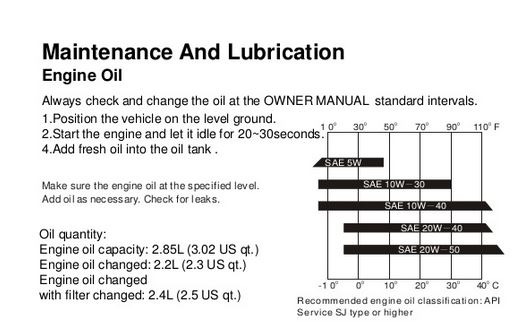
There are many types of motorcycle oils on the market today. In order to choose the “standard” lubricant for motorcycles, in addition to knowing the information about their “vehicle”, only the vehicle needs to be familiar with the motorcycle oil parameters printed on the package when choosing lubricants.
The first motorcycle oil parameter to pay attention to is the viscosity grade SAE
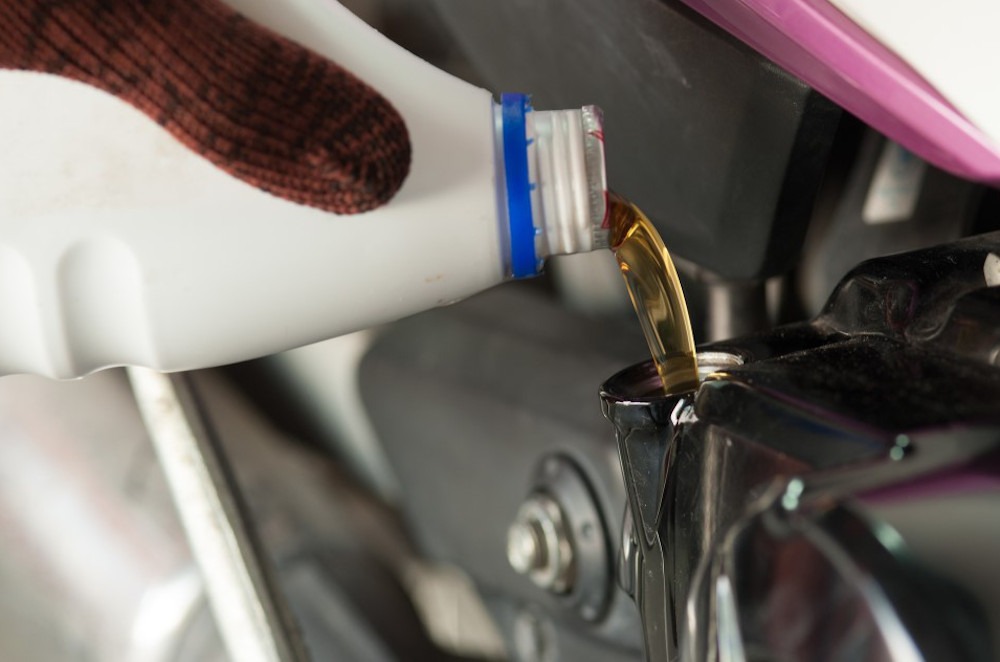
According to SAE (American Society of Automotive Engineers), lubricants for 4-stroke engines are usually divided into two types: single-grade lubricants and multi-grade lubricants. In particular, the viscosity characteristics in low and high temperature conditions (hot and cold) are very important parameters for choosing lubricants for motorcycles.
Single grade lubricating oil: usually only symbols SAE 40, SAE 50. This type of oil only ensures the lubrication requirements of the engine at high temperatures. When the temperature is low (when the engine is not running), the single-grade oil can be too thick, making it difficult to start and circulate the oil to the engine components.

Multigrade lubricants: Overcoming the disadvantages of single grade oils, multigrade lubricants such as SAE 10W-30, 5W-40, 10W-40 and 20W-50 have been developed and used more and more widely. The letter W is said to stand for “Winter – winter” indicating the ability to start diverse in seasons with different temperatures.
The number before “W” is the viscosity grade in cold or winter conditions, which indicates the temperature range at which the engine starts well. The lower the viscosity grade (0W, 5W, 10W, 15W, 20W, 25W), the thinner the oil will be at negative temperatures, so it will be easier to start the car in cold weather.
Viscosity grade in hot weather or summer, written after the letter W: for example 40. The higher the viscosity grade (20, 30, 40, 50, 60), the more the oil will maintain its viscosity at high temperature (100°C), providing better engine protection during high-intensity operation.
In the past, many car owners often had the notion that the thicker the oil, the better. However, this view has gradually become “outdated”. Currently, thanks to additives, low-viscosity oils such as SAE 40, 15W40 or 10W30 still ensure both lubrication, good dynamic protection and other benefits such as reduced power loss, reduced consumption. fuel, helping the vehicle to start and operate stably.
Contents
Why does an motor require oil?
Concurring to Gesellschaft für Tribologie (the German Society for Tribology), 5% of GDP is misplaced to grinding in industrialized nations. In Germany, that’s around 35 billion Euros each year. Tribology is the science and designing of grinding, wear and grease, in case you pondered. Wherever parts are moving, contact is made. Grinding makes warm, which may be a misfortune of vitality.
So other than the truth that parts will wear out exceptionally quickly without oil, there are noteworthy misfortunes within the vitality that’s being created. Hypothetically, parts may well be exceptionally, exceptionally profoundly cleaned to make smooth surfaces that rub against each-other, but to urge to the point of being genuinely smooth (not fair looking smooth to the bare eye) is amazingly costly, and unachievable in mass generation.
Quality grade of motorcycle oil
Quality level is one of the second most important motorcycle oil parameters that car owners need to pay attention to. API (short for American Petroleum Institute) is the United States petroleum association. API classifies the quality level of lubricants for gasoline engines as SA, SB, SC, SE, SF, SG, … to the highest level currently is API SN. API grade of lubricants for diesel engines is denoted CA, CB, CC, CD, … In which the last letter is used to distinguish grades and is arranged in alphabetical order. The later letters represent a higher grade. For example, API grade SN is higher than SM; SM is higher than SL.
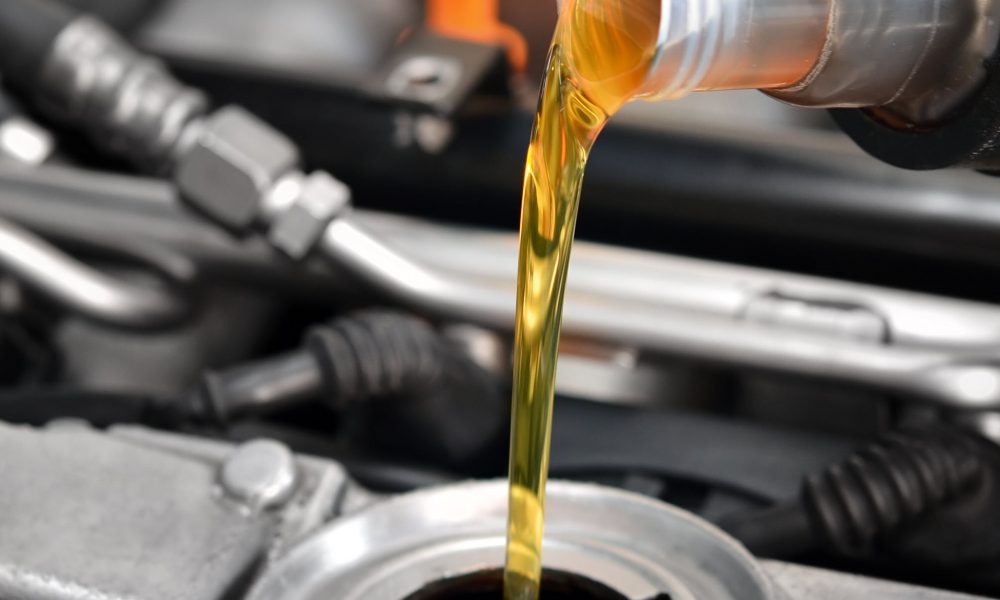
The last symbol is JASO (Japan Motor Vehicle Standards Agency). JASO standards are divided into 4 levels: JASO MA, JASO MA1, JASO MA2 and JASO MB. Each level will tell how much friction is suitable for the clutch on your car. Normally, all 3 levels MA, MA1 and MA2 are used for digital cars, and MB is for scooters. However, it should be noted that the lubricant used for gear cars can be used for scooters, but not vice versa because JASO MB lubricant has poor friction, causing clutch slippage.
Knowing the parameters of motorcycle lubricants, choosing genuine lubricant products from famous brands helps you limit the selection of inappropriate lubricants, using the wrong oil for your vehicle.
How to Perused Cruiser Oil: A Comprehensive Direct
When it comes to keeping up your bike, checking the motorcycle oil is an basic assignment that ought to never be dismissed. Frequently checking and changing the oil can offer assistance keep your motor running easily and expand the life of your cruiser. In any case, to appropriately check your oil, you wish to know how to read motorcycle oil. In this direct, we are going walk you through the steps of perusing your cruiser oil and understanding what it implies.
Understanding the Essentials of motorcycle oil
Some time recently we plunge into how to studied cruiser oil, it’s essential to get it a few essentials approximately the oil itself. Bike oil may be a grease outlined to decrease contact and wear on the engine’s moving parts. It’s ordinarily made up of a base oil and additives that offer assistance secure the motor from contaminants, avoid erosion, and give cleaning properties.
Cruiser oil comes totally different viscosities, which alludes to its thickness or how easily it streams. The thickness of the oil you would like for your cruiser will depend on the manufacturer’s proposals and the climate you ride within. The oil’s thickness is demonstrated by a code, such as 10W-30, printed on the oil holder.
Checking Your motorcycle oil Level
To examined your bike oil, you must to begin with check the oil level. Take after these steps to check your oil level:
- Begin your bike and let it run for some minutes to warm up the motor.
- Turn off the engine and let it cool down for a few minutes.
- Find the oil dipstick on your motorcycle. It’s ordinarily close the motor and includes a little handle for pulling it out.
- Drag out the dipstick and wipe it clean with a cloth or paper towel.
- Embed the dipstick back into the oil tank and at that point drag it out once more.
- Check the oil level on the dipstick. The oil level ought to be between the two marks on the dipstick, usually labeled as “min” and “max.” In case the oil level is underneath the least stamp, include more oil.
- How to Studied Cruiser Oil
- Once you’ve checked your oil level and know that it’s within the fitting extend, you’ll be able presently examined the oil’s condition. Here’s how to perused bike oil:
Once more, drag out the dipstick and wipe it clean.
See at the color of the oil on the dipstick. New, clean oil ought to be a clear golden color. On the off chance that the oil is dim or messy, it may be time for an oil alter.
Check the consistency of the oil. Rub a small amount between your fingers. New oil ought to feel smooth and smooth. If it feels abrasive or has metal chips, it’s an sign of motor wear and may require a mechanic’s attention.
Check the oil’s consistency. Hunt for the thickness code on the dipstick and compare it to the prescribed thickness in your motorcycle owner’s manual. In case the oil’s thickness is as well lean or as well thick, it may not give satisfactory oil for the motor.
Understanding motorcycle oil Investigation
In the event that you need to require your oil perusing to the another level, you’ll be able perform an oil examination. An oil examination is a process of sending a test of your motorcycle oil to a research facility to analyze its condition. The laboratory can test the oil for wear metals, contaminants, and other properties that can give knowledge into your engine’s wellbeing.
Oil investigation can be accommodating in distinguishing potential issues some time recently they ended up more extreme and exorbitant to settle. It’s particularly valuable for more seasoned cruisers which will have collected wear over time. A few oil investigation companies give comprehensive reports that not as it were demonstrate the oil’s condition but moreover give suggestions for maintenance and repairs.
Conclusion
Knowing how to perused cruiser oil is an fundamental expertise for any cruiser proprietor. Frequently checkingand changing your oil can offer assistance guarantee your engine runs easily and endures for a long time to come.
By taking after the steps outlined in this direct, you’ll check your oil level, studied the oil’s condition, and guarantee your motorcycle’s motor is appropriately greased up.
Keep in mind to check your oil frequently, particularly some time recently long rides or after extended periods of capacity. In the event that you take note any significant changes in your oil’s color, consistency, or consistency, it’s always best to counsel a proficient workman to guarantee your engine’s wellbeing.
By taking the time to understand how to perused cruiser oil, you’ll be able be confident that your bike is well-maintained and prepared to hit the open street. So go ahead, get your dipstick, and begin perusing that oil!
Facebook: https://www.facebook.com/Motobikeinworld
Twiter: https://twitter.com/motoinworld2023
Instagram: https://www.instagram.com/motoinworld/
Pinteres: https://www.pinterest.com/motoinworld/
Linkedin: www.linkedin.com/in/motoinworld

